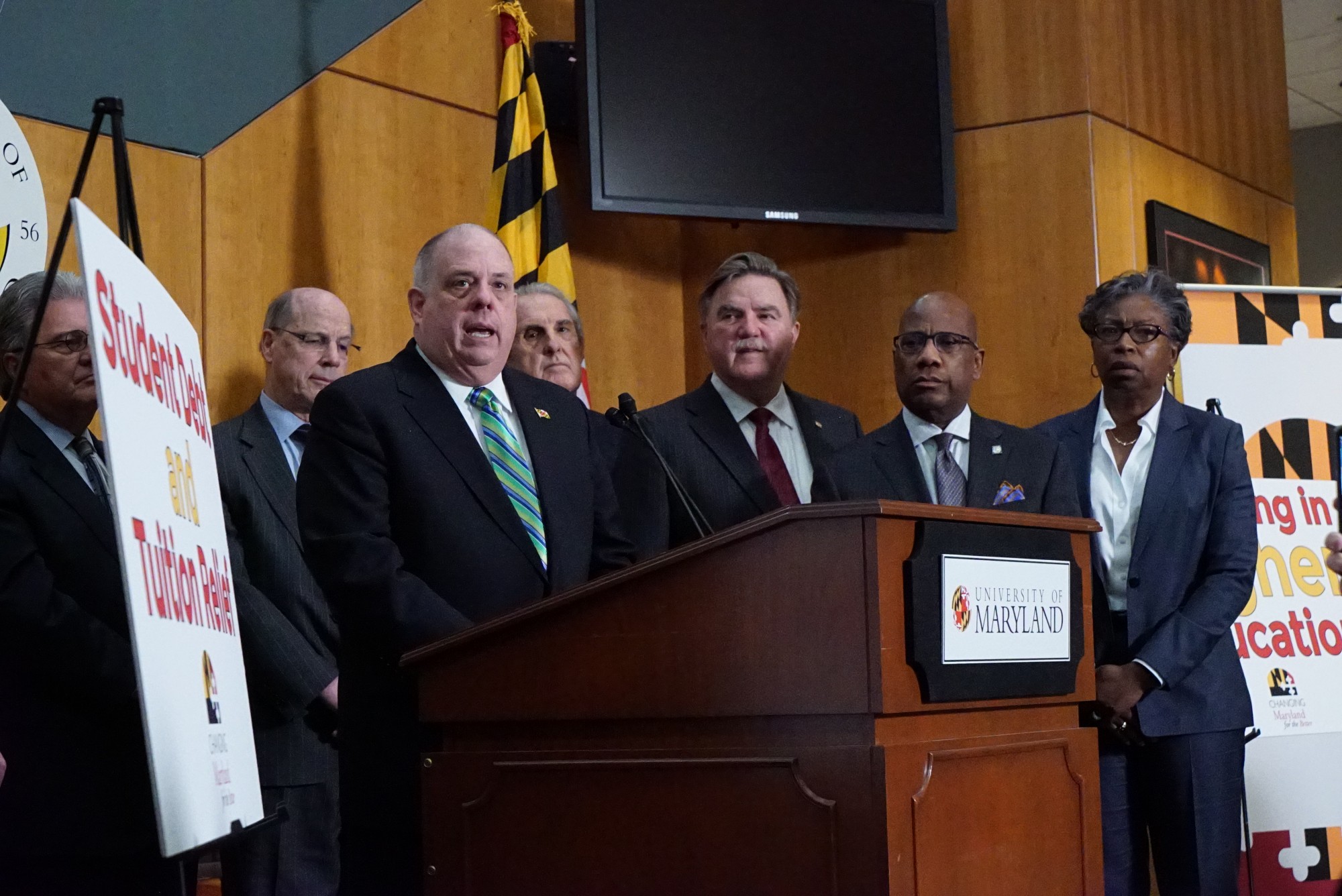Maryland Gov. Larry Hogan on Tuesday announced his opposition to the new health care bill Republican senators introduced to replace the Affordable Care Act, citing the loss of billions of dollars to this state.
A bill to repeal the Affordable Care Act, also known as Obamacare, will hit the Senate floor for voting next week before the end of the fiscal year on Sept. 30, when the Republicans lose budget reconciliation powers — which allow them to pass the bill with only 50 votes, compared with 60 required to overcome a potential Democratic filibuster.
If the bill — introduced by Republican Sens. Lindsey Graham of South Carolina and Bill Cassidy of Louisiana — is passed, Maryland is set to lose $13 billion from federal funding between 2020, which is when the plan is projected to begin, and 2026, according to a report by consulting firm Avalere Health.
“Unfortunately, the Graham-Cassidy bill is not a solution that works for Maryland,” Hogan wrote in a statement. “It will cost our state over $2 billion annually while directly jeopardizing the health care of our citizens.”
The bill proposes allocating block grants to the states to regulate their own health care systems and equalizing federal funds received by states for health care.
This distribution of funds would result in cuts for 34 states, while 16 states would see gains. It would also result in a $215 billion cut in federal money to states between 2020 and 2026, according to the Avalere report.
Dylan Roby, the graduate studies director of this university’s public health school, is not convinced the plan will work well.
“I don’t think it addresses why our health care cost is so high,” Roby said. “It tries to address health care spending, but it doesn’t necessarily reduce health care spending overall. [Instead] it just puts pressure on the states to figure out a way to pay for that health care spending.”
While the bill does aim to cut down federal health care costs, it plans to do so by shifting the spending and providing the states with capped payments, Roby said.
“I think it will create an even more fragmented system,” Roby said. “[We] will probably end up with a tale of two worlds, where states that are willing to raise taxes and highly regulate their insurance industry might be able to survive and continue providing universal coverage for their residents, [while] states that don’t have that ability … will suffer quite a bit.
“It is possible that those states will have an even higher uninsured rate,” he continued.
The proposal allows states to decide whether to allow insurers to cover essential benefits, as well as charge higher premiums to those with pre-existing conditions, but to do so, states must explain how they’d provide “adequate and affordable” coverage to people with those conditions.
The plan also aims to benefit the young and healthy with cheaper, bare-bone options, and will continue to allow young adults to remain on their parents’ insurance plans until the age of 26.
However, older people will be disadvantaged, as the plan will allow states to get federal waivers for insurers to charge them more than they charge younger people, according to the AARP. The Affordable Care Act currently caps that ratio at 3-to-1.
The public health school hosted a seminar on the Graham-Cassidy bill on Thursday with guest speaker Andy Schneider, a Georgetown research professor and a former senior adviser at the Centers for Medicare and Medicaid Services during the Obama administration.
“There is no way in which this bill is better than the [Affordable Care Act],” Schneider said. “[The passing of the bill] would be a huge mistake for the country. It would do nothing to deal with the price of drugs, the price of hospital care, the price of physician services [and] the price of ambulatory services.”



